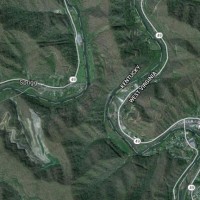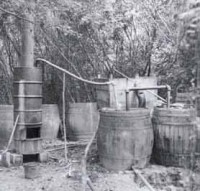We Southern Appalachians are the only demographic group that can be publicly insulted with impunity in this politically correct twenty-first century. This will continue to be the case so long as Southern Appalachians continue to aid in the promulgation of lies about themselves and their ancestors.
The most damaging lie about our people is the Hatfield and McCoy feud story. I am not referring to the actual history of the two families, which is not really remarkable for violence in the context of late nineteenth century frontier America. The problem is the story, which is largely false.
The Hatfield and McCoy feud story, whether in the slimmed down forty-page versions of John Spears and Shirley Donnelly, or in the super-sized four hundred page version of Dean King, is not true. In fact it is false in so many of its material claims—as my own books clearly prove–that it must be considered a lie on the whole.
I despise the feud tales, and I have a very good reason to do so: Every lie in every feud tale makes my ancestors look evil and barbaric. There is not a single lie in any feud book that makes them look more sane and civilized.
I use the term “lie” deliberately, to refer to material misrepresentations of fact which the writer either knew or should have known was false when he wrote it. I am not talking about simple errors like a wrong date or the confusion of similar names—the kind of mistakes every writer makes.
The feud lie, which presents ALL of our ancestors—and, by extension, all of us– as stupid and bloodthirsty cowards, is spread by three types of Appalachians:
First, there are those who believe that the super-sized feud yarn will attract tourists to an area that is virtually in its economic death throes. I try to be as kind as possible to these misguided kinsmen who honestly believe that it is profitable to be dishonest.
They can and must be approached with the power of the truth. Our real history, properly presented, would attract just as many tourists as does the feud lie.
The second group is comprised of folks who just don’t know any better. They need a history lesson or two.
The third group of home-grown aiders and abettors of the feud liars is not approachable on the same basis. Comprised of people who are enamored with the idea of being descended from pathological killers, this group is beyond reason. Rational arguments based on historical facts have no effect on these people. They will help sell a feud book that they frankly admit is false in many material particulars, so long as it presents their ancestors as bloody savages.
 Click on graphic to enlarge.
Click on graphic to enlarge.
I am sure that most people reading this have seen Dean King’s Facebook page, which features many members of the third group.
The most egregious of the many lies in King’s book says that Ellison Hatfield started the Election Day fight by drawing a knife on Tolbert McCoy. That means that Ellison, called “a splendid man and soldier” in the definitive McCoy story by Truda McCoy, was a would-be murderer, who got only what was coming to him when the McCoys butchered him. By extension, Devil Anse was nothing but a cold-blooded murderer when he executed the three innocent McCoys.
Yet, we see direct descendants of Ellison and Devil Anse pictured with King, helping him sell his lies about their ancestors.
Of course the same lie makes Preacher Anse Hatfield a willing accessory to the triple murder of the three McCoys, but that does not keep descendants of Preacher Anse from giving the book rave reviews.
The best thing about Jim McCoy in the book is the ridiculous claim that he worked for Devil Anse at Anse’s moonshine still, at a time when a vicious blood feud between the two families was underway. Yet, some descendants of Jim McCoy laud the book.
Asa Harmon McCoy, a warrior to the bone—by the record—is a coward who deserts his home and hides out in a cave. Yet direct descendants of Asa Harmon are shown on King’s Facebook page, grinning from ear to ear as they help him pitch his lies.
The best depiction of any Hatfield or McCoy in King’s screed is of Ran’l McCoy. He is simply a victim. There is not a single laudatory word about Ran’l or any other McCoy in the four hundred plus pages of the book. Yet King has no shortage of McCoys plugging his book.
This third group of Hatfields and McCoy descendants is beyond the reach of rational argument. Any time spent trying to enlighten them is utterly wasted.



